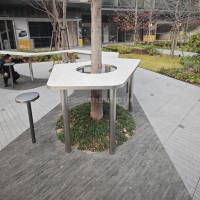Welcome to the website for landscape facilities products and knowledge.
How do manufacturers prevent warping or deformation in plastic landscape round trash cans under heavy loads?
Manufacturers employ several strategies to prevent warping or deformation in plastic landscape round trash cans when subjected to heavy loads. First, they use high-density polyethylene (HDPE) or polypropylene (PP), which offer superior strength and flexibility. These materials resist cracking and bending even under stress.
Reinforced ribbing is another key technique. By adding vertical or horizontal ribs to the trash can's structure, manufacturers distribute weight evenly, reducing pressure points that could cause warping. Some designs also feature thickened walls or double-walled construction for extra durability.
Proper material thickness plays a critical role. While thinner plastic reduces costs, manufacturers balance this with adequate thickness in load-bearing areas to maintain structural integrity. UV stabilizers are often added to prevent sun-induced weakening that could lead to deformation over time.
Many premium trash cans now incorporate a tapered design, wider at the base, to improve stability. Some include weighted bottoms or anchor points for securing the can in place. Advanced molding techniques like rotational molding create seamless, stress-resistant products with uniform material distribution.
Temperature-resistant additives help the plastic maintain its shape in extreme weather conditions. Manufacturers also conduct rigorous load testing during development, simulating years of heavy use to identify and address potential weak points before production.
By combining these material science and engineering approaches, modern plastic trash cans can reliably withstand heavy loads without warping, even in demanding outdoor environments.
Related search:

Recommendation
An outdoor bar counter with stainless steel and terrazzo materials in an irregular shape